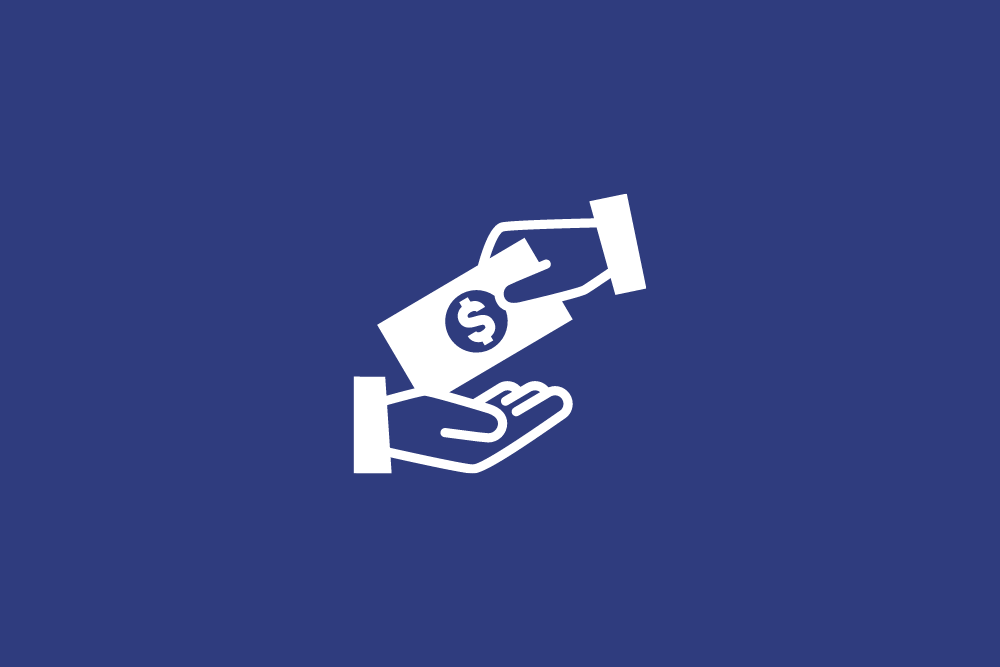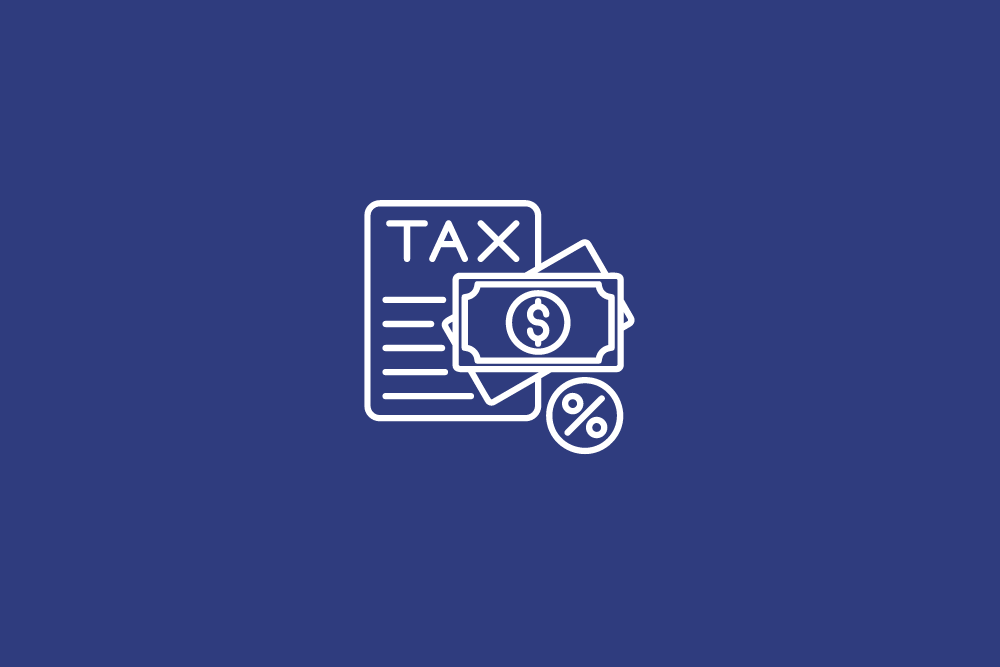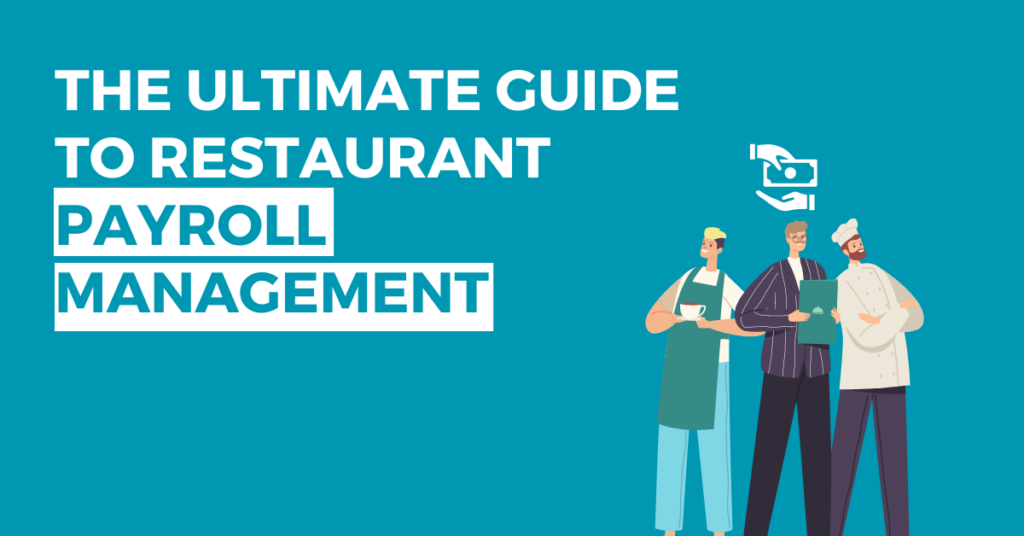Running a successful restaurant is a complex endeavor, with payroll management being pivotal. Ensuring timely and accurate payment of staff is crucial for a thriving business. This guide offers insights and best practices for streamlining your restaurant’s payroll. It ensures both employee satisfaction and business success.
This guide covers essential payroll components, from tracking hours, managing tips and taxes, and adhering to labor laws. It’s designed for both seasoned restaurateurs and newcomers. You’ll discover the strategies to optimize payroll management and foster a positive work environment.
The restaurant industry’s dynamic nature makes payroll complex. Employees often have multiple roles, varying pay rates, and additional tips. Mastering these complexities is vital for your restaurant’s success. This guide provides the knowledge and tools to simplify payroll, ease administrative tasks, and enhance customer experience.
What is Restaurant Payroll?

Restaurant payroll management is more than just about processing paychecks. It’s a detailed system that tracks employee hours, calculates pay, and ensures compliance with laws and taxes. The key components of restaurant payroll include managing tip income, handling various pay rates, and overtime, and keeping accurate records.
Importance of Accurate Payroll Management
Proper restaurant payroll management is vital for several reasons. It ensures employees are paid correctly and on time, boosting job satisfaction and reducing turnover. Accurate payroll also helps restaurants comply with labor laws, avoiding hefty penalties. Detailed tracking and reporting are crucial for transparency and audit readiness.
The restaurant industry faces high turnover rates, often up to 75%, employing around 15.1 million people in the U.S. By focusing on payroll management, restaurateurs can create a positive work environment, stay compliant, and drive business success.
Setting Up Restaurant Payroll
Establishing a solid restaurant payroll system begins with filing essential legal documents. This includes W-4 and I-9 forms for new employees, and accurately tracking tip income to meet legal requirements. It’s also vital to track time worked to ensure payroll accuracy and comply with minimum wage laws.
Obtaining Required Legal Documentation
Restaurant owners must have the right paperwork to comply with federal, state, and local laws. This entails:
- Completing W-4 forms for each new employee to determine their tax withholdings
- Verifying employee eligibility to work in the U.S. by collecting I-9 forms
- Registering with state and local tax agencies to fulfill restaurant payroll setup obligations
Establishing Employee Records and Pay Rates
Keeping detailed employee records is crucial, including precise pay rates for each job. This is particularly important for restaurants where staff handle multiple roles at different pay levels. It’s essential to track hours worked in each role to calculate gross pay, overtime, and total labor costs accurately.
By establishing a thorough employee pay rate system, owners can ensure fair compensation and adherence to all relevant labor laws.
Creating a Pay Schedule
Creating an efficient restaurant payroll schedule is vital for adhering to labor laws and ensuring timely, accurate pay for employees. Owners must weigh factors like business size, cash flow, and employee preferences to choose the best pay frequency. Options include weekly, bi-weekly, or monthly payments.
Determining Payment Frequency
The payroll schedule should match the business’s specific needs. Smaller restaurants might choose weekly or bi-weekly payments to closely manage cash flow. Larger establishments often prefer monthly payroll to simplify administrative tasks. Regular pay periods can enhance employee satisfaction and retention, as seen with a 26% increase in retention for weekly pay.
Complying with Labor Laws and Regulations
Payroll must comply with federal, state, and local labor laws, regardless of the chosen frequency. This includes adhering to the Fair Labor Standards Act (FLSA) for minimum wage, overtime, and recordkeeping. Owners must also consider tip credits, tip pooling, and proper tip reporting for tipped employees to comply with IRS and Department of Labor rules.
By setting up a structured, compliant payroll schedule, owners can ensure accurate, timely payments. This approach helps maintain a productive workforce and avoids costly penalties for non-compliance.
Calculating Payroll Taxes

Accurately managing restaurant payroll taxes is vital for financial health. Employers must deduct employees’ Social Security and Medicare taxes (FICA) and federal income tax. State and local taxes may also apply, depending on your location.
Federal, State, and Local Tax Considerations
For someone earning $1,000 weekly, federal and state taxes take about 25% of their earnings. Younger employees often owe less in income taxes, with payroll taxes making up about 15% of their wages.
Keeping up with tax laws and filing requirements is crucial. Not adhering to these can lead to fines and legal issues, harming your restaurant’s success.
Handling Tipped Employee Wages
Tip income is crucial in the restaurant sector. The IRS demands all tips be reported. Employers must ensure accurate reporting and may face additional Social Security and Medicare taxes based on reported tips.
Managing wages for tipped employees correctly is key to payroll compliance. Restaurants using the tip credit model must ensure employees earn at least the federal minimum wage, with tips making up the rest. Some states require a higher cash wage for these employees, so it’s vital to know the local laws.
Managing Tipped Employee Compensation
In the restaurant sector, managing tipped employee compensation is vital for payroll management. Establishments must develop a thorough system for tracking and reporting tip income for employees like servers and bartenders. This entails either a creative tip jar setup or a tip pooling policy. Keeping precise records of tip earnings is essential to meet IRS standards and accurately calculate payroll taxes.
Tip Reporting and Tracking
Restaurants must ensure that tipped employees accurately report their earnings. This can be achieved through electronic systems or manual logs. Detailed records of tip income help restaurants comply with IRS regulations and accurately calculate payroll taxes. Not reporting tip income correctly can result in hefty penalties, as seen with a restaurant owner who was fined for not paying over $715,000 in payroll taxes.
Tip Pooling Policies
- Tip pooling is widespread in the restaurant industry, where tips are gathered and shared among eligible staff.
- Restaurateurs must craft clear tip pooling policies that adhere to labor laws and guarantee fair pay for all tipped employees.
- Starting January 1, 2023, tipped employees in New Jersey will earn at least $5.26 an hour, with the minimum wage rising to $15 by January 1, 2024. The tip credit will increase from $7.87 to $9.87 on January 1, 2024.
- On the other hand, Pennsylvania’s tip credit is $4.42, making the tipped minimum wage $2.83, while Delaware’s tip credit is $9.52, setting the tipped minimum wage at $2.23.
By adopting detailed tip reporting and tracking systems, along with clear tip pooling policies, restaurants can ensure fair compensation for tipped employees and precise payroll tax calculations. This adherence to labor laws fosters a positive work environment and boosts employee satisfaction.
Gross Pay, Net Pay, and Labor Cost Calculations
Managing a restaurant’s payroll involves understanding gross pay, net pay, and labor costs. Gross pay is the total earnings an employee receives, including base pay, bonuses, and tips, before any deductions. Net pay is the amount the employee takes home after taxes and other withholdings.
Accurate calculations of these figures are key to meeting minimum wage laws and controlling labor costs. Restaurants must account for labor costs, which include salaries, hourly wages, overtime, benefits, payroll taxes, and paid time off.
To calculate labor cost percentage, use this formula: (Total Labor Costs for the Period / Total Sales for the Period) x 100. For instance, a 32% labor cost percentage suggests that labor is taking up a large part of the restaurant’s revenue.
| Restaurant Concept | Ideal Labor Cost Percentage |
|---|---|
| Quick Service Restaurants (QSR) | 25% – 30% |
| Casual Dining Full-Service Restaurants (FSR) | 25% – 30% |
| Fine Dining Full-Service Restaurants (FSR) | 30% – 35% |
| Standalone Bars and Nightclubs | 18% – 24% |
| Bars Located Inside Restaurants | Around 30% |
Knowing these calculations and benchmarks aids restaurant owners and managers in making smart decisions about staffing and cost-saving strategies. This leads to a healthier bottom line.
Restaurant Payroll Management
Effective restaurant payroll management requires detailed tracking of employee hours and various pay rates. The fast-paced nature of the restaurant sector means staff often switch roles within a pay period. It’s vital to record each employee’s work hours and the pay rates they’re entitled to. This ensures accurate gross pay, correct overtime pay, and adherence to labor laws.
Tracking Employee Hours and Multiple Pay Rates
Restaurants need a strong system to track the hours each employee works, including roles with different pay rates. Tools like time clocks, mobile apps, or digital solutions can help capture exact clock-in and clock-out times. Accurate records of employee hours are crucial for hour tracking and precise pay rate calculations.
Calculating Overtime Pay
Calculating overtime is key to payroll management. The Fair Labor Standards Act (FLSA) mandates overtime pay for hours over 40 in a week, at a rate of 1.5 times the regular hourly wage. Correct tracking of hours and applying the right overtime pay calculations are essential for payroll compliance and avoiding hefty penalties.
Mastering the complexities of restaurant payroll, from tracking hours to managing pay rates and overtime, demands a deep grasp of labor laws. By adopting comprehensive payroll processes, restaurants can ensure fair compensation, maintain compliance, and create a positive work environment for their team.
Payroll Reporting and Compliance
Ensuring compliance with payroll regulations is vital for restaurants to dodge significant fines and legal troubles. The specific payroll reporting needs differ by location but generally cover quarterly or yearly reports for income tax, state unemployment taxes, and other regulatory duties.
Local, State, and Federal Filing Requirements
Restaurants must keep pace with payroll reporting mandates at local, state, and federal levels. This entails submitting precise and timely reports to the Internal Revenue Service (IRS), Department of Labor (DOL), and other regulatory agencies. Non-compliance can lead to substantial penalties and legal repercussions.
- Federal law mandates employers to maintain payroll and employment records for at least three years.
- The DOL’s Wage and Hour Division recovered over $274 million in back wages and damages in fiscal year 2023 for noncompliant businesses.
- Delayed or inaccurate tax filings can incur penalties, typically around 10% of the owed amount, or based on the time it takes to rectify the submission.
| Regulation | Description |
|---|---|
| Federal Income Tax | Restaurants must withhold federal income tax from employee pay based on taxable wages and tip income, as well as allowances claimed on W-4 forms. |
| State and Local Income Tax | Restaurants must withhold state and local income tax from employee pay based on taxable wages and tips. |
| FICA Taxes | Restaurants must withhold half of employees’ Social Security and Medicare Taxes and pay the other half as part of FICA requirements. |
| Federal Unemployment Tax (FUTA) | Restaurants must pay FUTA tax without any withholding from employees’ paychecks. |
Adhering to local, state, and federal payroll reporting mandates is crucial for restaurant owners. Engaging professional help or using payroll software can aid in ensuring accurate and timely submissions. This approach shields the business from expensive penalties and legal complications.
Choosing the Right Payroll Software
Many restaurateurs opt for payroll software to simplify the restaurant payroll process. It’s essential to focus on features that cater specifically to the restaurant sector. Key considerations include managing various pay rates, tip reporting, overtime, and integration with other management systems.
Features to Look for in Restaurant Payroll Solutions
Restaurants need payroll software that meets their unique demands. When assessing restaurant payroll software, look for these features:
- Flexible pay rates and tip tracking for tipped employees
- Automated overtime calculation to meet labor laws
- Integration with point-of-sale (POS) systems for easy time-tracking
- Payroll tax management, including federal, state, and local taxes
- Employee self-service portals to lighten the administrative load
- Comprehensive reporting and compliance tools for simplified regulatory filings
- Dedicated customer support for payroll-related queries or issues
Investing in payroll software designed for the restaurant industry streamlines payroll processes. It enhances accuracy and allows you to concentrate on other business operations.
Conclusion
Effective restaurant payroll management is vital for a food service business’s success and compliance. It involves understanding the key components of restaurant payroll, following best practices for setting up and maintaining payroll records, and using the right payroll software. This ensures employees are paid accurately and on time while adhering to all labor laws and regulations.
Understanding the Fair Labor Standards Act (FLSA) requirements for hourly wages and overtime payments is crucial. Managing payroll taxes and tipped employee compensation is also essential. A comprehensive approach to restaurant payroll management is key for a thriving, legally compliant operation. Staying updated with state and local regulations helps avoid penalties and ensures employees receive fair compensation.
FAQ’s
What is the definition of restaurant payroll and its key components?
Restaurant payroll covers the process of paying employees. It includes tracking hours, managing tips, handling taxes, and keeping accurate records. It ensures compliance with labor laws and prepares for audits by providing transparency.
Why is accurate restaurant payroll management crucial?
Accurate payroll management ensures employees get paid correctly and on time. It helps maintain compliance with labor laws. It also prepares for audits by offering detailed business transparency.
What are the legal requirements for setting up a restaurant payroll?
Setting up payroll starts with filing legal paperwork like W-4 and I-9 forms for new hires. It also involves accurately tracking and reporting tip income to meet IRS regulations.
How should restaurateurs establish employee records and pay rates?
Establishing detailed employee records is crucial. It includes setting pay rates for each position, especially for staff handling multiple roles. This ensures accurate payroll calculations.
What are the key considerations for creating a pay schedule for restaurant employees?
Creating a pay schedule requires meeting FLSA and state minimum wage laws. It should allow tipped employees to benefit from tip income. The schedule must comply with IRS and Department of Labor rules and state tax obligations.
How should restaurateurs handle payroll taxes, including those related to tipped employees?
Understanding payroll tax deductions for Social Security and Medicare (FICA) and federal income tax is essential. Restaurants must also handle tip income reporting and payroll tax obligations, depending on their location.
What are the best practices for managing tipped employee compensation, including tip reporting and tip pooling?
Restaurants should track and report tip income for tipped employees. They must have clear tip-pooling policies that comply with labor laws. This ensures fair compensation for all tipped staff.
How should restaurateurs calculate gross pay, net pay, and total labor costs?
Understanding gross pay, net pay, and total labor costs is vital. It involves calculating employee compensation, including base pay, bonuses, and tips, before and after deductions.
What are the key considerations for tracking employee hours and calculating overtime pay?
Tracking work hours and pay rates accurately is crucial. It ensures correct gross pay, overtime pay, and compliance with labor laws. This is especially important for staff filling in for others during a pay period.
What are the payroll reporting requirements for restaurants?
Payroll reporting requirements vary by location. They include quarterly or annual filings for income tax, state unemployment taxes, and other regulatory obligations.
What features should restaurateurs look for when choosing payroll software?
When choosing payroll software, focus on features that cater to the restaurant industry. Look for tip reporting, overtime calculations, and integration with other management systems.
